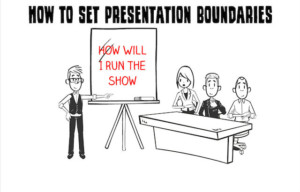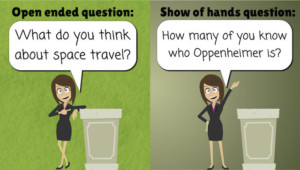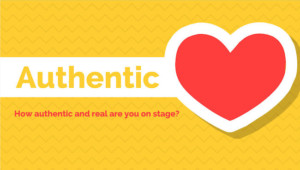You have to get better at Extemporaneous Speaking.
Here is why followed with some tips to help you think faster and better on your feet.
Imagine you’re working hard on a project plan or product, and a co-worker interrupts to let you know that a C-level executive is in the conference room down the hall and wants you to give a quick update on that initiative. Right Now!
Or maybe you’re in a job interview and a question from left field catches you unprepared:
Can you think on your feet quickly and deliver a concise and compelling message? Or will you stammer your way through as you struggle to find the right words?
If you answered “stammer.” you’re not alone. A study found that even CEO’s of organizations struggle with impromptu communication. The same study found that most CEOs lack awareness around this weakness.
If you think this is a weakness of yours, don’t freak out: Extemporaneous speaking and thinking off the cuff are skills that can be acquired and even mastered.
Most of my suggestions here on the Magnetic Speaking site are about presentations and public speaking, and specifically, how to prepare and give a talk.
Many of the techniques we learn to use in preparation for formal presentations would seem not to apply to extemporaneous speaking. But perhaps they do. So let’s talk about ways to prepare for when you’re unprepared.
Interesting Background of Extemporaneous Speaking
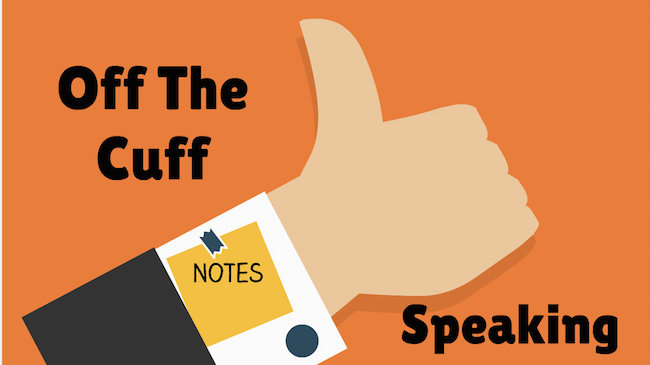
Extemporaneous speaking is sometimes called impromptu (from improvisation) speaking, off-the-cuff (a reference to the days when a speaker might write a few notes on the starched cuff of their shirt) speaking, and thinking on your feet.
I have some ideas to share with you on how to make the most of it when you are called to make impromptu remarks, and we’ll try to keep your shirt clean!
Extemporaneous speaking can be one of the most difficult types of speaking, but can also be the most fun and rewarding to your career and confidence.
As I hinted before, the key to extemporaneous speaking is to prepare for such an opportunity without making it appear you’ve done so. You can apply many of the techniques you use to create more formal presentations as you prepare to make more off-the-cuff remarks.
However, since you won’t be at your desk with your laptop in front of you with easy access to your existing presentations and tools like Google, you’ll have to be a little more resourceful.
When I was a kid, I used to watch a TV show called MacGyver: It was a clever secret agent who could get out of any situation using only what he could see in front of him. The best extemporaneous speaker is like MacGyver, resourcefully coming up with eloquent remarks in the right tone in the spur of the moment.
Tip # 1 Use a Proven Structure Every Time
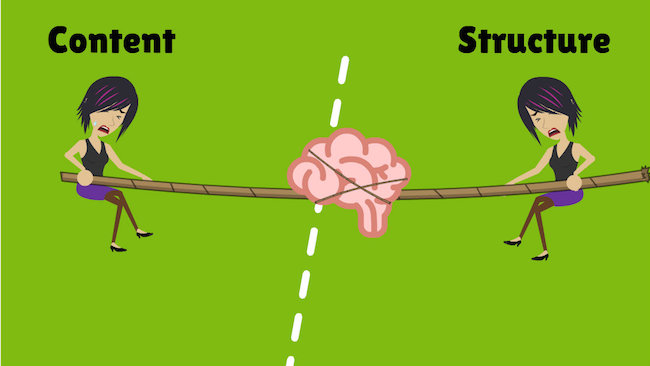
When you are asked to speak off the cuff, your brainpower will be divided in half by two activities. One part will focus on determining the right message, and one part will concentrate on the structure of the talk.
Since both tasks require a lot of mental power, you’ll only be able to use half of your total brain power on each task, and your message ends up sucking.
That’s why you have to have a solid structure or outline for talks that you can automatically follow without too much thought. Once you have a structure that works stored in your brain, all you have to do is focus on fitting the right content into it. And voila! You will be articulate, concise, and eloquent.
In this blog, you’ll find many tried-and-true structures that you can learn and use. And of course, we hold a weekly public speaking class (the first class is free) where we teach and practice a structure you can use for your daily communications.
Here is my favorite extemporaneous speech outline. I use it on a regular basis. It’s not only ideal for extemporaneous speaking; If you want to use this beyond thinking on your feet check out the Messaging Bootcamp where you will learn how to structure presentations of all kinds.
The SEE structure:
S = Statement
E = Evidence
E = Emotion
The SEE Structure is a powerful tool for you to use when speaking extemporaneously. The name itself is designed to be memorable, so once you understand the SEE Structure, a short, simple word will help you recall it and put it to use.
Anytime somebody asks you a question or prompts you to present something, think of this structure and answer:
First, make a statement about the subject they’ve enquired about. Second, provide evidence to support your statement. And finally, back it up with emotion, telling a story or citing an example.
Let’s try it with the previous example: You get pulled into the board room and asked about Project X.
Your answer (which is your “talk”):
S (statement) = We are making progress on Project X
E (evidence) = Yesterday we reached the second milestone and we are on the budget and on time.
E (emotion) = Michael, our head of operations tells me that he is happy with the progress, and he believes that if we stay at this pace, we will be ready to launch the product by next quarter.
The executives in the board room will be blown away by your command of the material and your poise in delivery!
It is a simple but powerful formula. Just memorize it and practice it until it becomes second nature to you.
Then the next time you are asked a question you are not prepared for, you will not waste brainpower on the structure, you will focus all of your energy on the content.
Here is a list of some structures you can learn from our blog:
1- How to do an elevator pitch
2- How to tell your company story
3- Customer success story template
Tip # 2 Prepare To Speak On Your Topic At a Glance
The outline above is great, given you have good content to fill it. If you don’t know the topic you’ve been asked to speak about, then the structure alone will not save you.
As a professional, you have to be aware of your projects, your deadlines, and your milestones. When I was an engineer, I hated when people came unprepared to a meeting. They showed up to a meeting to give an update on their work, and they were clueless about what they were working on and how well it was going.
Some people are great at remembering the content.
I am not.
So, I used to create a Gantt chart and have notes on it for all of my projects. (See sample Gantt chart above) So even when I get called to give an update on the spot, I can always pull the chart off my phone and glance at it if I need to, before I answer the questions.
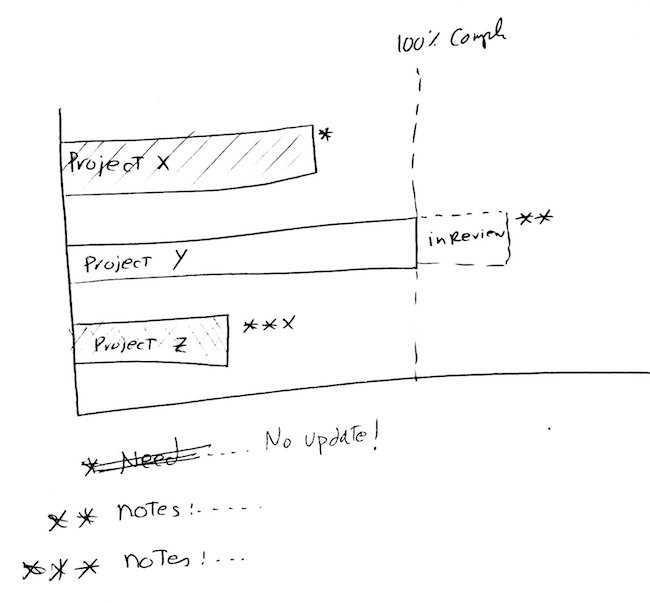
These days, you don’t need to carry a notebook with you all of the time. You can always have your phone handy and type your notes into a memo or Evernote the progress of your projects. It will keep you aware of your projects and any updates, and you will look sharp and professional when you are asked to speak on the spot.
A client of mine told me that when he gets pulled into a meeting with one of the partners at his firm, he’ll take a quick picture of the latest data on his smartphone and walk into the meeting. He rarely needs it, but it helps to have it.
Tip # 3 Outline Your Speech In Powerful Building Blocks

In addition to the content available to you because of your awareness in your job, there are many other building blocks you can use to craft quickly an impromptu speech, including anecdotes, sound bites, and building blocks.
An excellent speaker always has a library of anecdotes and sound bites (previously constructed messages, brief quotes, and data points, from others at the company, industry leaders, etc.) at his or her disposal.
If you speak often, you may have a few favorite anecdotes. I suggest these in your phone in Evernote, too. When the time comes, you will probably be able to relate one of your favorite anecdotes to the impromptu presentation you are asked to give.
Anecdotes can be a very effective way to anchor your spontaneous remarks. They probably won’t help you if you’re asked to give a progress report on an initiative or project.
But let’s say you’ve been invited to compare your organization’s strategy to that of a competitor, or to give your thoughts on new technology. In these situations, anecdotes and sound bites can round out your remarks and add the evidence and the emotion you need.
Just as it’s important to be aware of your work environment, your current projects, and so on, a good speaker is also keenly aware of the world around him or her.
Keep up on industry news through social media or a news app on your phone. You can customize the news delivery to serve up only your key topics. Just think how impressed your audience will be when you walk into the conference room for an extemporaneous talk, and you’re the first one to know about a major acquisition in the field!
With such a story at your disposal, depending upon the length of your talk, you could be halfway to preparing your remarks.
Tip # 4 Utilize Extemporaneous Delivery and Style Methods
Extemporaneous speaking situations may seem less formal than the typical presentation you’re accustomed to, but remember you’re still being judged and evaluated, and you still have a communications goal to achieve.
Off the cuff speaking calls for adjustments in presentation style. For example, you will not be on an elevated stage, but at the same level as your audience. The best tone for most of these situations is to be conversational. Speak directly to your audience, not at them, frequently scanning, making eye contact, and smiling if appropriate.
Even if you’re fluent with the SEE Structure, you may still find yourself briefly struggling with finding the next thing to say. Many speaking clients I work with are concerned about lengthy pauses and losing their audience. But the extemporaneous talk may be just the opportunity to use an intentional strategic pause.
Remember, Pauses Are Your Friends:
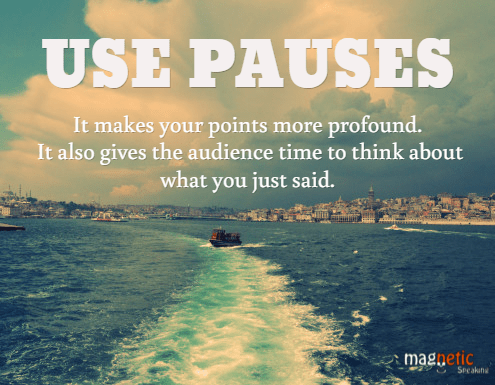
There’s an interesting effect that happens when a speaker pauses. To the speaker, the pause may seem like an eternity. But in reality, it is usually less than a second. And as long as you keep it short, a well-placed pause will give you an opportunity to stop speaking long enough to think about your next thought.
Most speakers don’t pause often enough anyway, and the pause gives your audience a chance to digest the last thing you said. Some of the best standup comedians rely on the pause. This makes the joke much funnier by giving the audience a chance to take it in and react to the concept of the joke. As a speaker, you need to give your audience an opportunity to digest the information.
In our weekly workshops, sometimes I let the participants stand up in front of the group and not say anything for 2 to 3 minutes. This helps them get comfortable with silence.
Tip # 5 Practice Extemporaneous Speaking At Toastmasters
One of the most difficult challenges, when it comes to extemporaneous speaking, is that you rarely get the chance to practice.
An excellent resource for speakers who wish to improve their skills in Toastmasters.
Toastmasters is an organization that meets weekly for the purpose of allowing its members to practice and improve their public speaking abilities in all situations.
Toastmasters often meet on-site at company facilities or nearby coffee shops at breakfast or lunchtime so people who work full-time can still participate. Toastmasters is a very collegial organization and is a nurturing place for even the most junior and timid speaker.
You can also practice with a colleague or friend using your handy smartphone and a tripod and challenge each other to speak on random topics.
Conclusion
Extemporaneous speaking is a great skill to cultivate.
Top managers and executives understand the importance of formal public speaking, as the presentations, you might give at a conference or company-wide meeting.
These skills are considered indispensable for career growth. But the ability to speak effectively in extemporaneous situations will make you a Navy Seal among speakers.
Politicians, celebrities, diplomats, and leaders are the kinds of people we picture as the best extemporaneous speakers, stepping to the microphone and wowing the audience with seemingly little effort. There’s no reason you can’t aspire to do the same.
Especially if you use some of the tools we’ve discussed here. With the right mindset, a set of proven tools, and the right preparation, you can refine your extemporaneous speaking skills, speak with confidence, and be influential in any situation.
